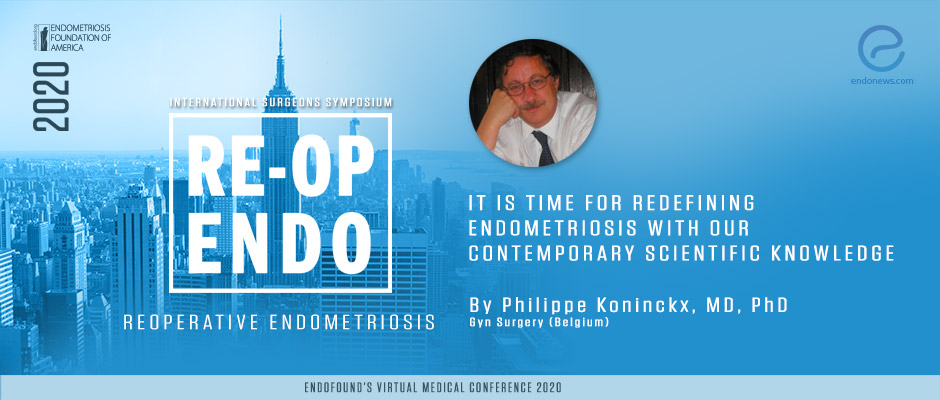It is time for redefining endometriosis with our contemporary scientific knowledge - Philippe Koninckx, MD, Ph.D.
Dec 16, 2020
Endometriosis is a genetic-epigenetic heterogenous surgical disease
Key Points
Information for the presentation: Philippe Koninckx, MD, Ph.D., is a well-known, globally famous Gynecologic Surgeon with a solid background in endocrinology, and nuclear laboratory medicine, reproductive medicine being the main clinical interest and with current main activity on laser laparoscopic excision of severe endometriosis. His presentation at the 2020 Endofound Medical Conference is about "Pathophysiology of endometriosis and adenomyosis for the clinician".
Importance:
- There is a need for a valid contemporary understanding of endometriosis since the standard definition as “endometrium like glands and stroma outside uterus” is about 100 years old and so seems outdated. It does not validate all the clinical presentations.
Highlights:
- Epigenetics as heritable traits, i.e., “phenotypes” result from interaction with external factors.
- Endometriosis lesions are clonal-like neoplastic growths, albeit benign in nature, and by this point of view, it is a surgical disease.
Remarks:
- Understanding endometriosis could be possible by looking at the subject through the genetic-epigenetic incidents involved.
- In this regard initiation and growth must be separated: The growth is affected by the environmental factors.
- The final remark regarding endometriosis as a benign tumor with five different categories is a more contemporary approach.
Lay Summary
Endometriosis defined as endometrium-like tissue outside the uterus has a poorly understood natural history. It is a heterogeneous disease having genetic-epigenetic features with many biochemical changes in the lesions. The Sampson hypothesis of implanted endometrial cells following retrograde menstruation is not able to explain all observations.
The property of genetic- and epigenetic features transmitted at birth may explain the hereditary aspects, the predisposition, and the endometriosis-associated changes in the endometrium, immunology, and placentation.
However, the pathogenesis of cystic ovarian or deep endometriosis lesions needs a variable series of additional epigenetic incidents.
One important clinical implication is that the deep endometriosis surgery should be visually complete and at the level of the bowel, a rim of fibrosis may be left behind.
Subtle lesions could well be viewed as endometrium in a different environment until additional factors operate.
The genetic epigenetic theory is compatible with all clinical situations of endometriosis.
Research Source: https://www.endofound.org/pathophysiology-of-endometriosis-and-adenomyosis-for-the-clinician-philippe-koninckx-md-phd?pop=mc
genetic and epigenetic endometriosis mc2020

